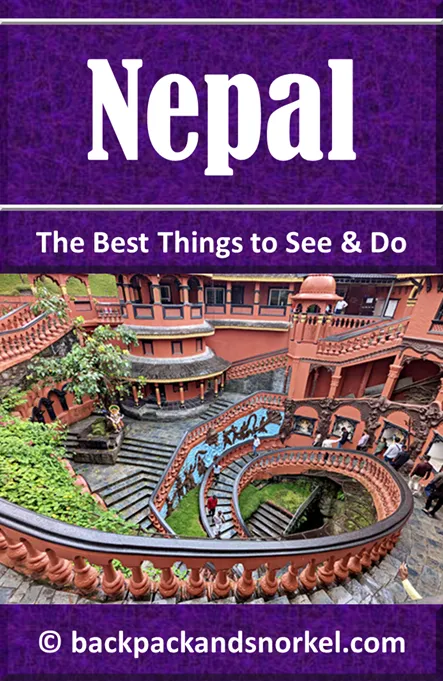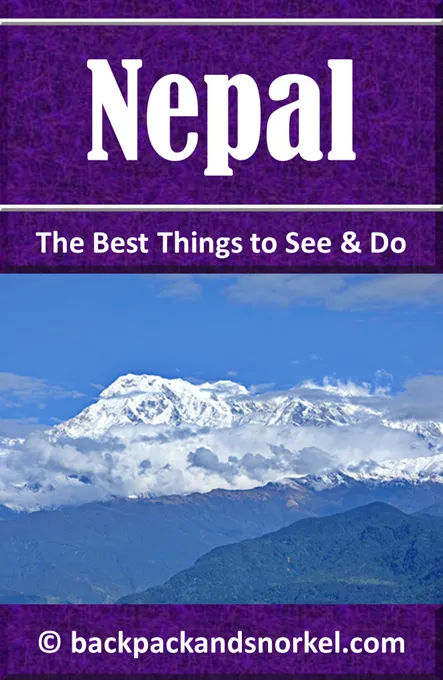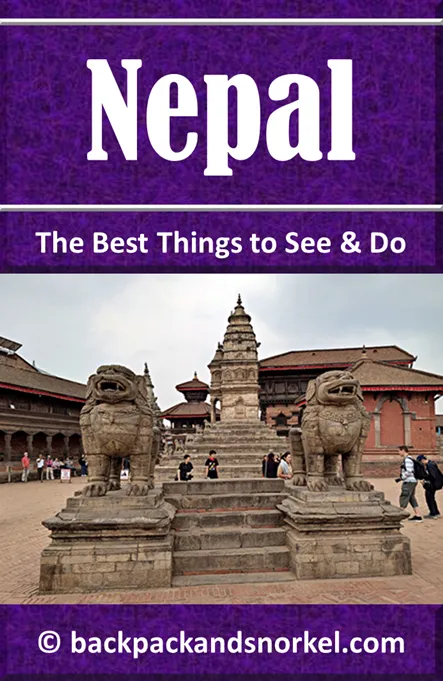Discover Bhaktapur's Gilded Entrance: The Magnificent Golden Gate - Nepal Purple Travel Guide
(map, reviews)
This is Premium Content! To access it, please download our
Backpack and Snorkel Purple Travel GuideThe Golden Gate is one of Nepal’s most stunning architectural marvels. Revered for its intricate craftsmanship and historical significance, this gilded gateway draws travelers from around the world seeking to explore Nepal’s rich cultural heritage.
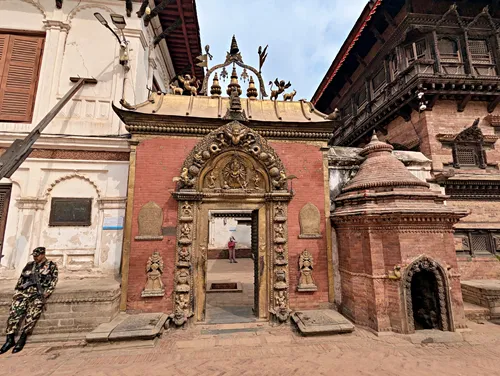
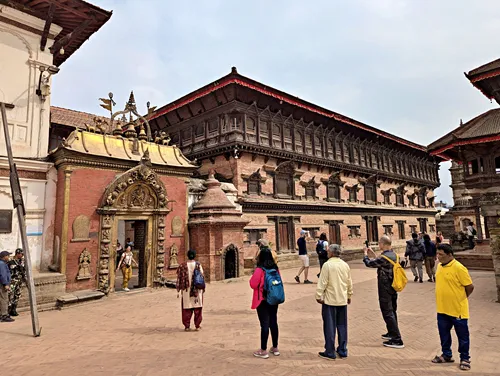

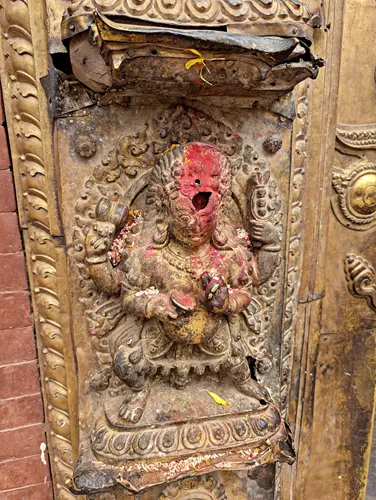
Here at Backpack and Snorkel Travel Guides, we typically promote self-guided walking tours.
But we realize that not everybody likes to walk by themselves in a foreign city. So, just in case that you rather go with ab guide: NO PROBLEM! Please see the Viator tours below.
free GuruWalk tours
paid Viator tours
What is the Golden Gate?
The Golden Gate is the main ceremonial entrance to the inner palace courtyard, which houses the Taleju Temple, a highly sacred space that was reserved for royalty and priests during the Malla period. The gate was constructed around 1753 by King Ranjit Malla (reigned from 1729 to 1769) as one of his final architectural contributions before Bhaktapur fell to the Gorkha conquest led by Prithvi Narayan Shah in 1769.
It is a brilliant example of traditional Newar art and metalwork, adorned with elaborate carvings of deities, mythical creatures, and floral motifs. Its gleaming surface is made of gold-plated copper, which gives the gate its iconic name.
Origin of the Name Golden Gate
The Golden Gate is locally known as Luṁ Dhvākā, and as Swarnadwar.
Luṁ Dhvākā (Lūn Dhwākā), comes from the Newar language:
‘Luṁ’ (or Lūn) means gold.
‘Dhvākā’ (or Dhwākā) means gate or door.
‘Swarnadwar’ is a Sanskrit-derived Nepali term that also means ‘Golden Gate’:
‘Swarna’ means gold.
‘Dwar’ means gate or door.
Historical and Religious Use of The Golden Gate
The project for the Golden Gate was initially conceived in 1646 by King Jagajjyoti Malla, who brought two renowned goldsmiths (Guṇasiṃhadeva Nivā and Mānadeva Nivā) from Lalitpur to design it. Although the craftsmen created a model of the gate, both died before work could begin. The project was then postponed, likely due to a shortage of gold.
Over a century later, in 1751, King Ranjit Malla revived the plan and provided the necessary funds. The descendants of the original artisans — Subhākara, Karuṇākara, and Ratikara — finally began construction, completing the gate in 1754.
The name ‘Golden Gate’ comes from its radiant golden façade, which was created using fire-gilded copper, a technique where a thin layer of gold is bonded to metal. The gate’s opulence was meant to reflect the wealth and spiritual devotion of the Malla kings, who ruled Bhaktapur from the 12th to the 18th century.
Today, the Golden Gate is considered one of the finest masterpieces of Nepalese art, especially in terms of Newar metalwork and religious symbolism. Its historical depth and artistic brilliance make it one of the highlights of Bhaktapur Durbar Square.
Historically, the Golden Gate served as the ceremonial entrance to the royal courtyard, where kings conducted important state and religious rituals. Behind the gate lies a courtyard to which Taleju Temple is attached. Taleju Temple was reserved exclusively for the royal family and priests.
The Royal Palace is free to enter with your paid admission to Bhaktapur Durbar Square. We show you what you can see inside the Royal Palace. Before you explore the Royal Palace starting with Yama Dwar Chowk, we recommend that you see the Palace of 55 Windows, which is one of the major highlights of Bhaktapur Durbar Square.
Back to your self-guided tour
Author: Rudy at Backpack and Snorkel
Bio: Owner of Backpack and Snorkel Travel Guides. We create in-depth guides to help you plan unforgettable vacations around the world.
Other popular Purple Travel Guides you may be interested in:
Like this Backpack and Snorkel Purple Travel Guide? Pin these for later:

